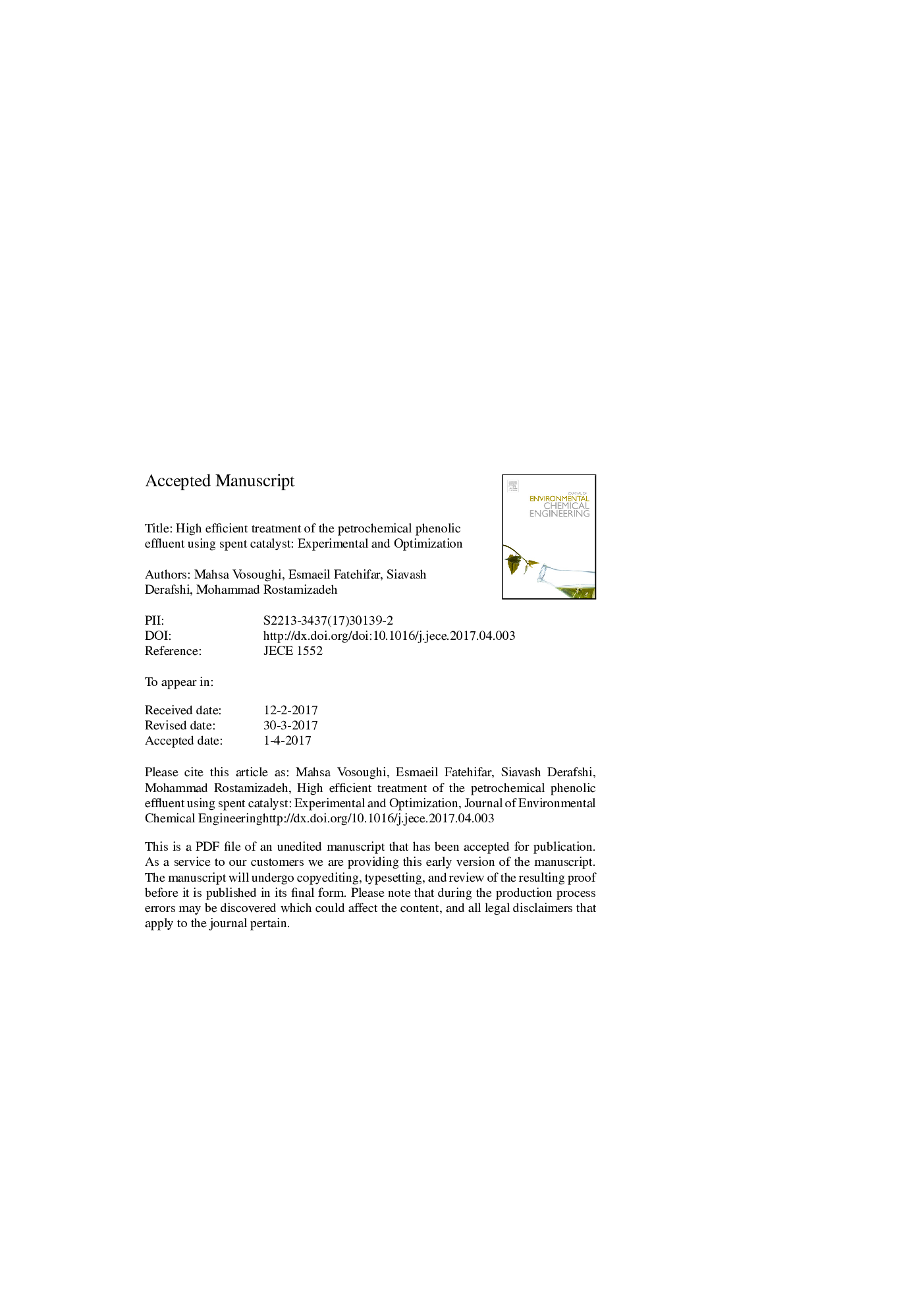| Article ID | Journal | Published Year | Pages | File Type |
|---|---|---|---|---|
| 4908542 | Journal of Environmental Chemical Engineering | 2017 | 31 Pages |
Abstract
Phenol is one of the dangerous volatile organic compounds (VOCs) which presents in almost every petrochemical plant's effluent. In this study, we regenerated spent catalyst of petrochemical styrene unit and applied to remove phenol from an industrial phenolic effluent in Fenton-like process. The catalyst was characterized using SEM, XRD, N2 adsorption-desorption, EDX and XRF techniques. Effects of four important variables including H2O2 concentration, catalyst amount, temperature and reaction time on the phenol removal efficiency were evaluated and optimized using Response Surface Methodology (RSM) based on central composite design (CCD). The developed model predicted the removal efficiency with high accuracy (R2 = 0.99). The optimum operational conditions were 47.1 °C, 0.16 mol Lâ1 H2O2, 20 g Lâ1 of catalyst and 92 min which resulted in the maximum removal efficiency (98.5%). Fenton-like oxidation process was at effluent neutral pH over the regenerated catalyst. The reported efficiency is sufficient to discharge the effluent in surface waters.
Related Topics
Physical Sciences and Engineering
Chemical Engineering
Chemical Engineering (General)
Authors
Mahsa Vosoughi, Esmaeil Fatehifar, Siavash Derafshi, Mohammad Rostamizadeh,
